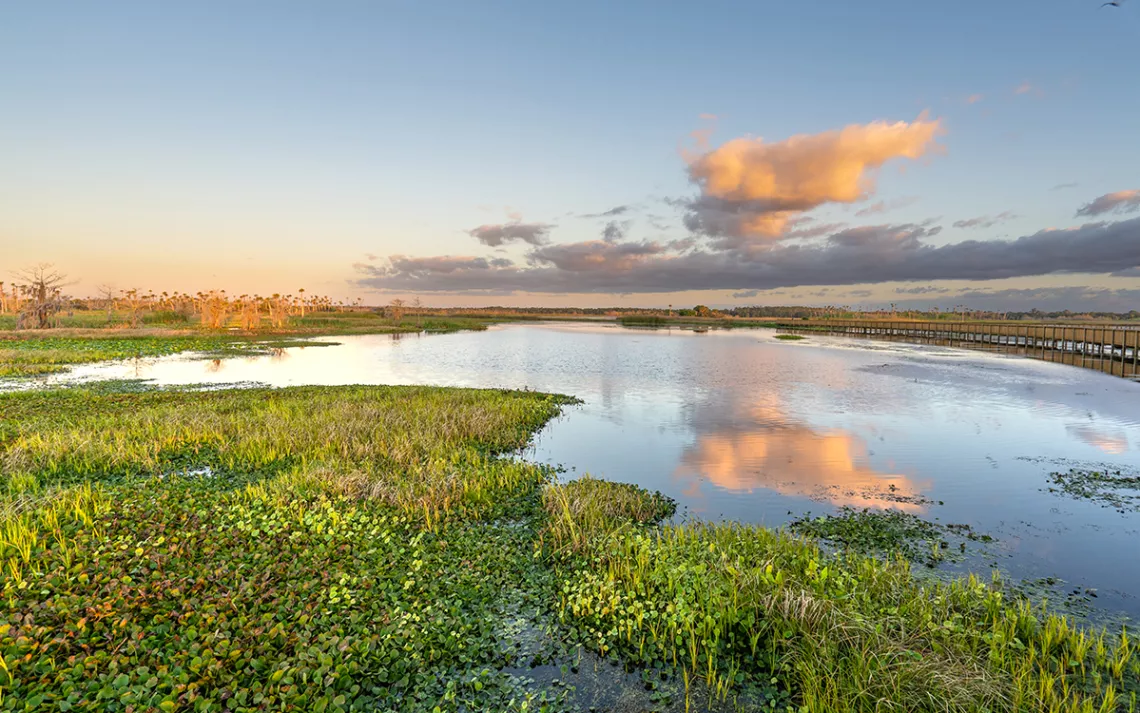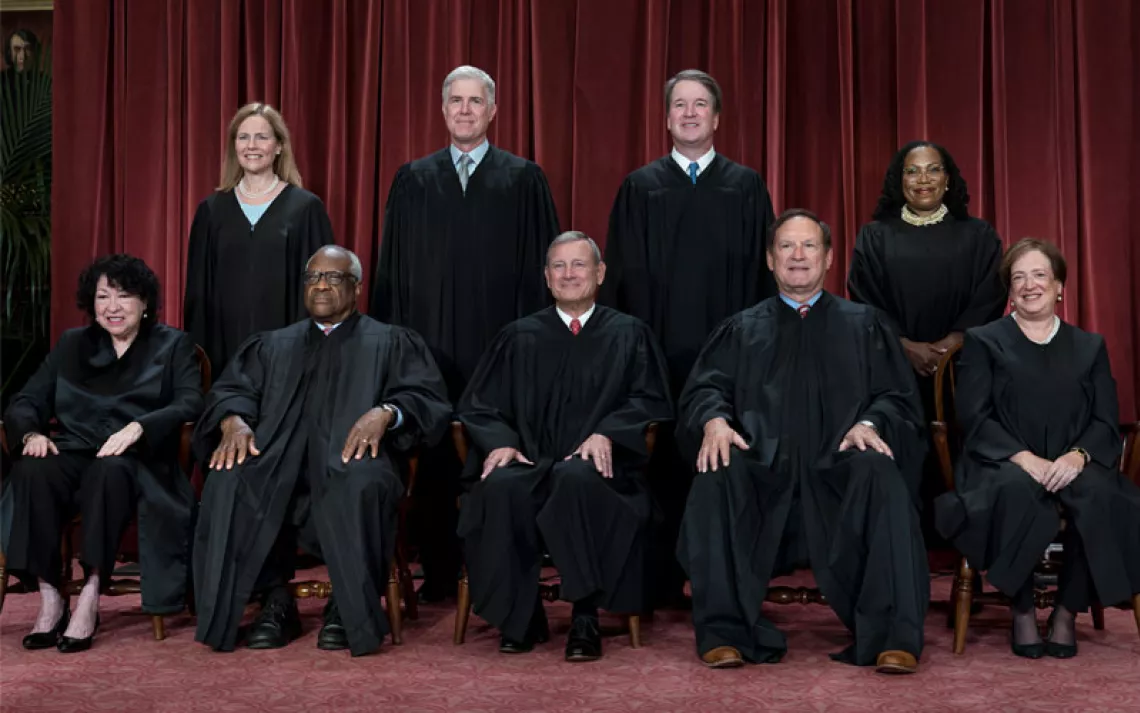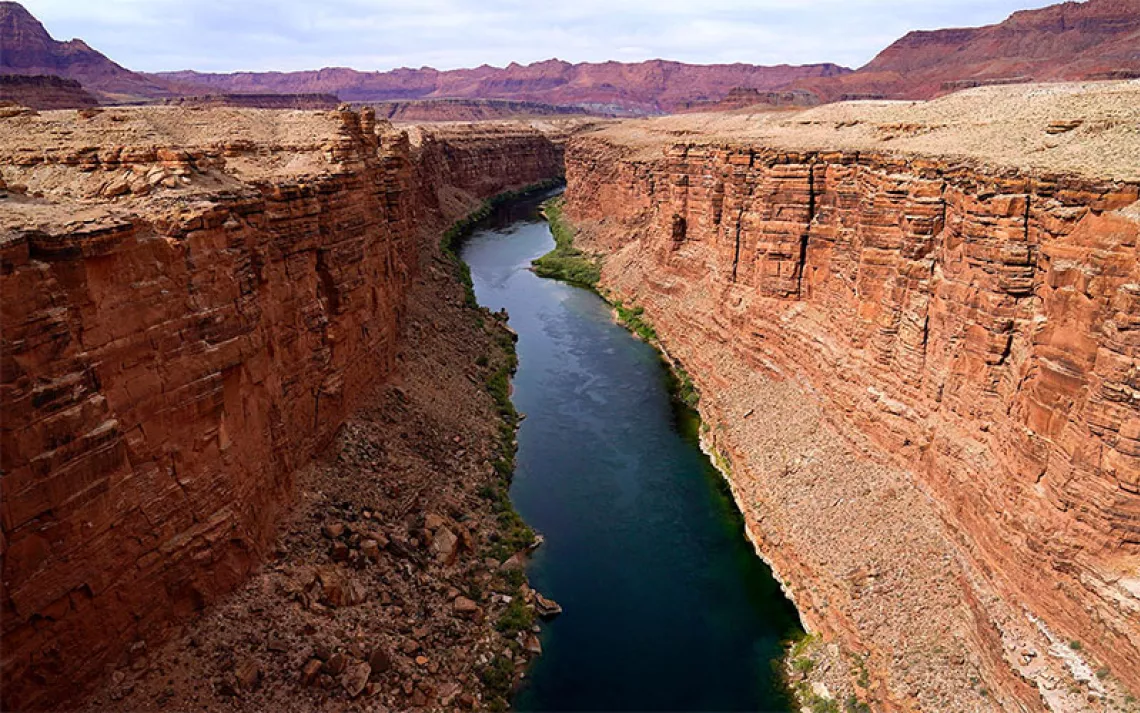Supreme Court Waters Down the Clean Water Act
In its latest ruling against environmental safeguards, SCOTUS decides that polluting or destroying some wetlands is OK

Orlando Wetlands Park in central Florida. The park is a large marsh area, home to numerous birds, mammals, and reptiles. | Photo by Bkamprath/iStock
The Supreme Court on Thursday continued its assault on basic environmental safeguards when a majority of the justices ruled that polluting or filling in some wetlands is permissible under the Clean Water Act, the law that has protected the integrity of US lakes, rivers, streams, and other water bodies for 50 years. The ruling wipes out protections for more than half of the country’s wetlands, going even further than policies proposed by the Trump administration.
The ruling in Sackett v. EPA was, technically, unanimous, as all nine justices agreed that the Clean Water Act shouldn’t apply to a parcel of land owned by an Idaho couple, Michael and Chantell Sackett, that filed the case. The justices, however, were sharply divided in their legal reasoning, with even one reliably conservative justice expressing exasperation with the majority’s arguments.
In an opinion written by Justice Samuel Alito, five justices concluded that only wetlands that have “a continuous surface connection” with bodies of water like lakes and rivers are covered by the Clean Water Act. That means that mining corporations, oil and gas operations, and building companies will now be able to fill in and/or discharge pollutants into seasonal wetlands, ephemeral streams, fens, and marshes— hydrological features that, scientists say, are crucial for maintaining the well-being of watersheds as a whole.
In a concurring opinion, Justice Brett Kavanaugh—who normally joins the conservative bloc of justices and is usually skeptical of federal regulations—wrote that the majority opinion will likely jeopardize the nation’s water quality. “By narrowing the Act’s coverage of wetlands to only adjoining wetlands, the Court’s new test will leave some long-regulated adjacent wetlands no longer covered by the Clean Water Act, with significant repercussions for water quality and flood control throughout the United States.”
Kavanaugh also complained that the court majority had willfully departed from the actual text of the Clean Water Act, as well as 40-plus years of consistent EPA practices and the Supreme Court’s own decades-long precedents. During oral arguments in the case last October, the hearing was dominated by a discussion of which wetlands should be considered “adjacent” to lakes and rivers.
On this point, Kavanaugh (whose concurrence was also signed by Justices Jackson, Kagan, and Sotomayor) argued that the court majority had misinterpreted the plain meaning of the word: “The ordinary meaning of the term ‘adjacent’ has not changed since Congress amended the Clean Water Act in 1977 to expressly cover ‘wetlands adjacent’ to waters of the United States.”
In a separate concurrence, the court’s three liberal justices criticized the majority for judicial overreach—overturning long-standing precedents and deciding for itself what Congress intended when it made the original law. “Make no mistake,” Justice Elena Kagan wrote. “Congress wrote the statute it meant to.” Her opinion went on to criticize the hubris of the majority. “The majority shelves the usual rules of interpretation,” Kagan complained.
“But a court may not rewrite Congress’s plain instructions because they go further than preferred,” Kagan wrote in a decision that combined cool analysis with an unmistakable impatience at how the majority twisted itself in logical knots to reach its conclusion. “That is what the majority does today in finding that the Clean Water Act excludes many wetlands (clearly) ‘adjacent’ to covered waters.” She ended by repeating, virtually verbatim, her dissent in last year’s West Virginia v. EPA decision, in which the conservative majority put a vise around implementation of the Clean Air Act. “[T]he Court substitutes its own ideas about policymaking for Congress’s. The Court will not allow the Clean [Water] Act to work as Congress instructed. The Court, rather than Congress, will decide how much regulation is too much.”
In response to the decision, environmental organizations and officials at the Environmental Protection Agency joined Justice Kagan in expressing frustration at the majority’s reasoning and echoing Justice Kavanaugh’s warning that the decision will negatively impact water quality throughout the United States.
“I am disappointed by today’s Supreme Court decision that erodes long-standing clean water protections,” EPA administrator Michael Regan said in a statement. “In 1972, an overwhelming bipartisan majority in Congress passed the Clean Water Act, giving EPA and Army Corp implementation responsibilities. In doing so, our leaders recognized that protecting our nation’s waters is vital to ensuring a thriving economy and agricultural sector, to sustaining diverse ecosystems, and to protecting the water our children drink.”
Nick Torrey, a senior attorney at the Southern Environmental Law Center, which filed a friend of the court on behalf of dozens of environmental groups, said, “Families and communities are now at greater risk from pollution and flooding because the Supreme Court abandoned long-standing clean water protections and decades of consistent bipartisan practice.”
While the justices didn’t go as far as the Sacketts and the right-wing legal outfits representing them wanted—which was a wholesale demolition of the Clean Water Act’s powers—environmental legal experts cautioned that the majority’s decision is by no means a middle ground position.
During a post-decision briefing, the SELC’s Torrey said the court’s decision “had put some tens of millions of acres of wetlands in jeopardy. Sam Shankar, an attorney with Earthjustice, said the court’s ruling was the “fruition” of a “decades-long push by … industries” to slash commonsense safeguards. “They have succeeded in building a judiciary that is willing to take this kind of action to rewrite the laws … when they can’t win the political fight.”
On Thursday, environmental groups said they would urge Congress to update the Clean Water Act and to reassert what it said when the original law was passed 50 years ago—that wetlands and marshes are key to the integrity of all the waters of the United States. But environmental advocates acknowledged that was a long shot given the current political dynamics in Washington, so they will likely concentrate on state-level legislation and rule-making to protect water quality.
In the meantime, the Supreme Court’s conservative majority will likely continue its rollbacks of environmental and public health and safety laws. As Justice Kagan noted, many of her conservative colleagues have “a reflexive response” to environmental regulation and apparently seek to limit “the anti-pollution actions Congress thought appropriate.” During its last term, the court restrained implementation of the Clean Air Act and made it more difficult to rein in carbon pollution from power plants. With this week’s decision, the court has restrained implementation of the Clean Water Act and made it easier to pollute or destroy wetlands.
Environmentalists have every right to wonder: What’s next?
 The Magazine of The Sierra Club
The Magazine of The Sierra Club



